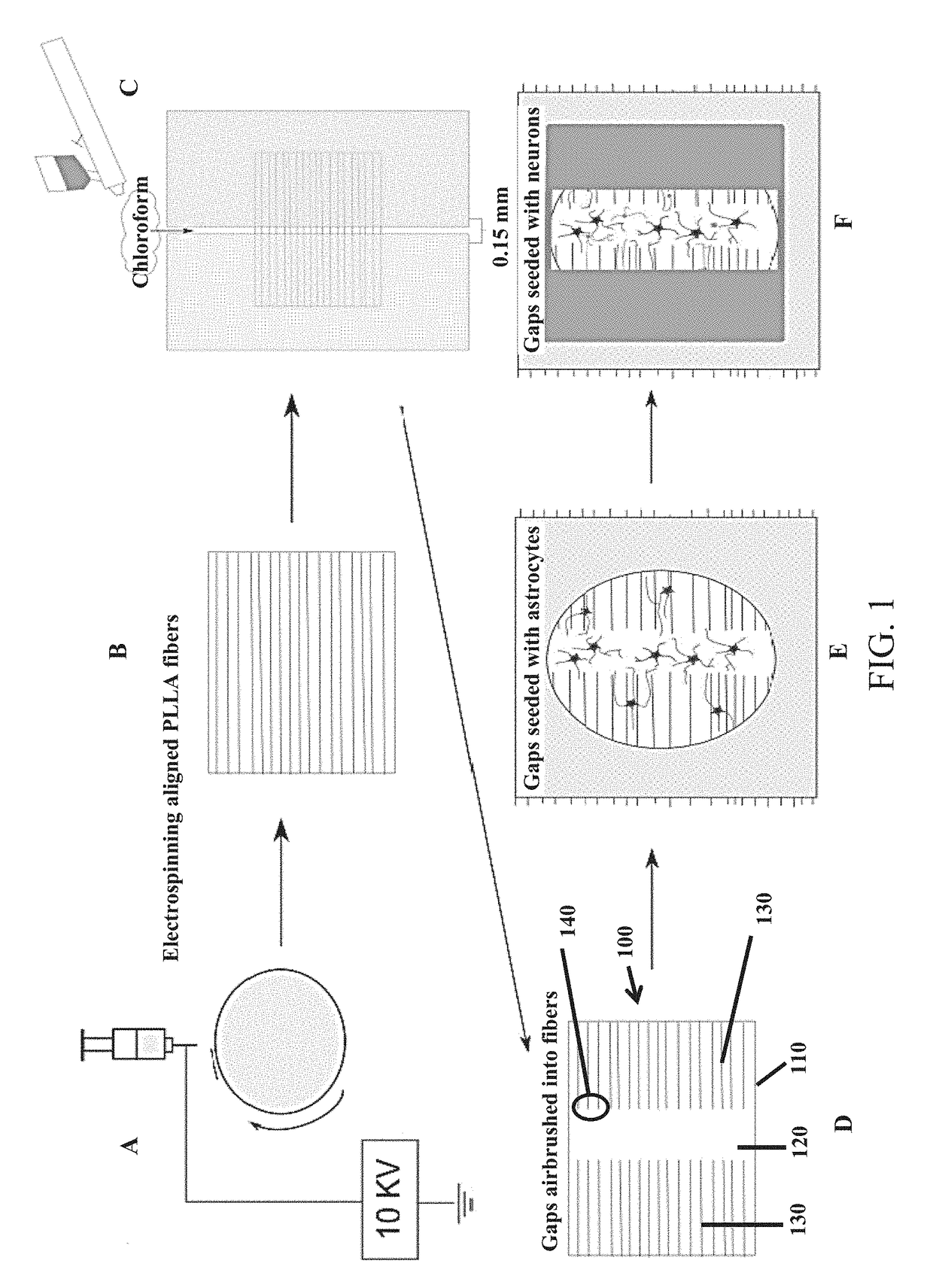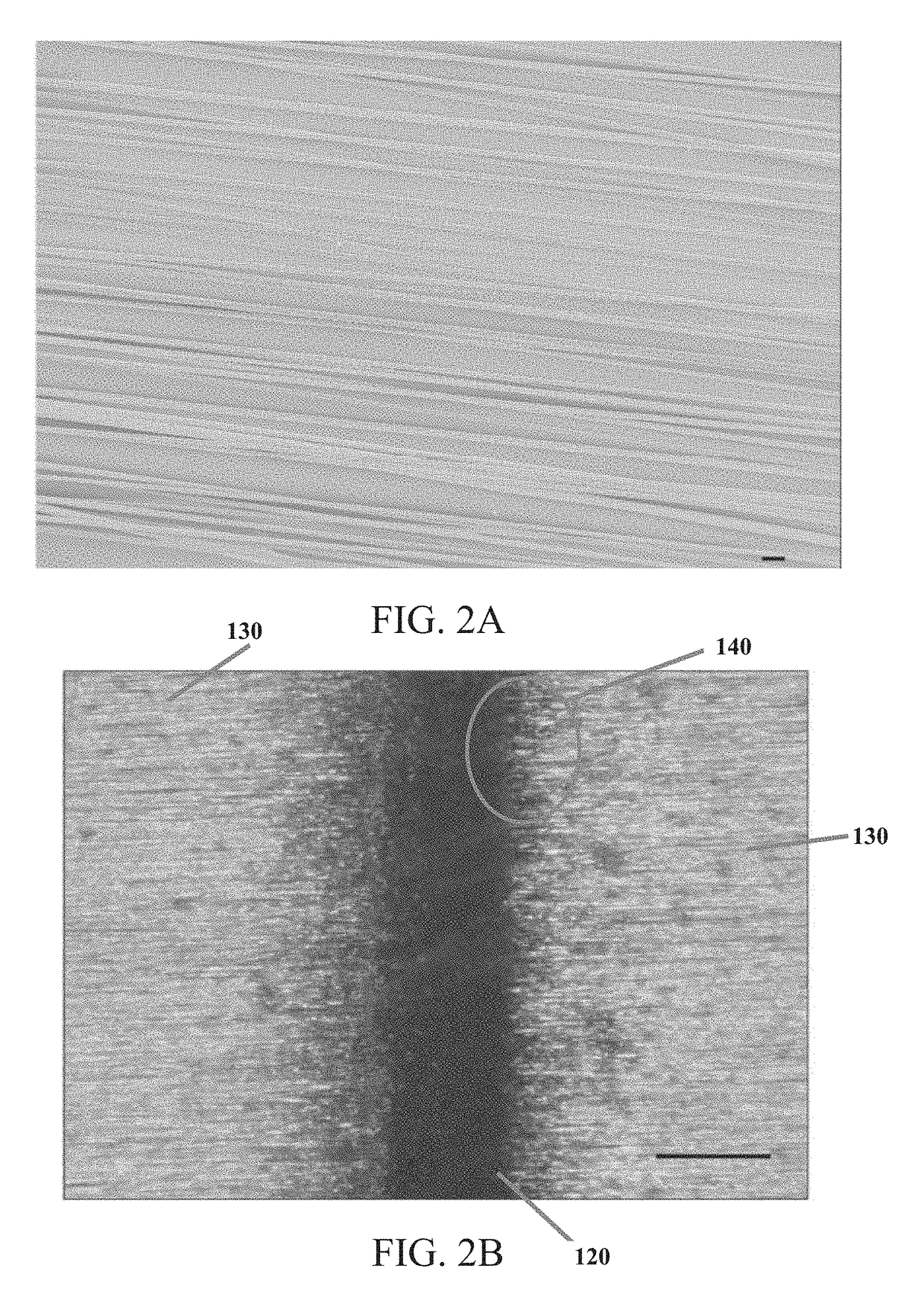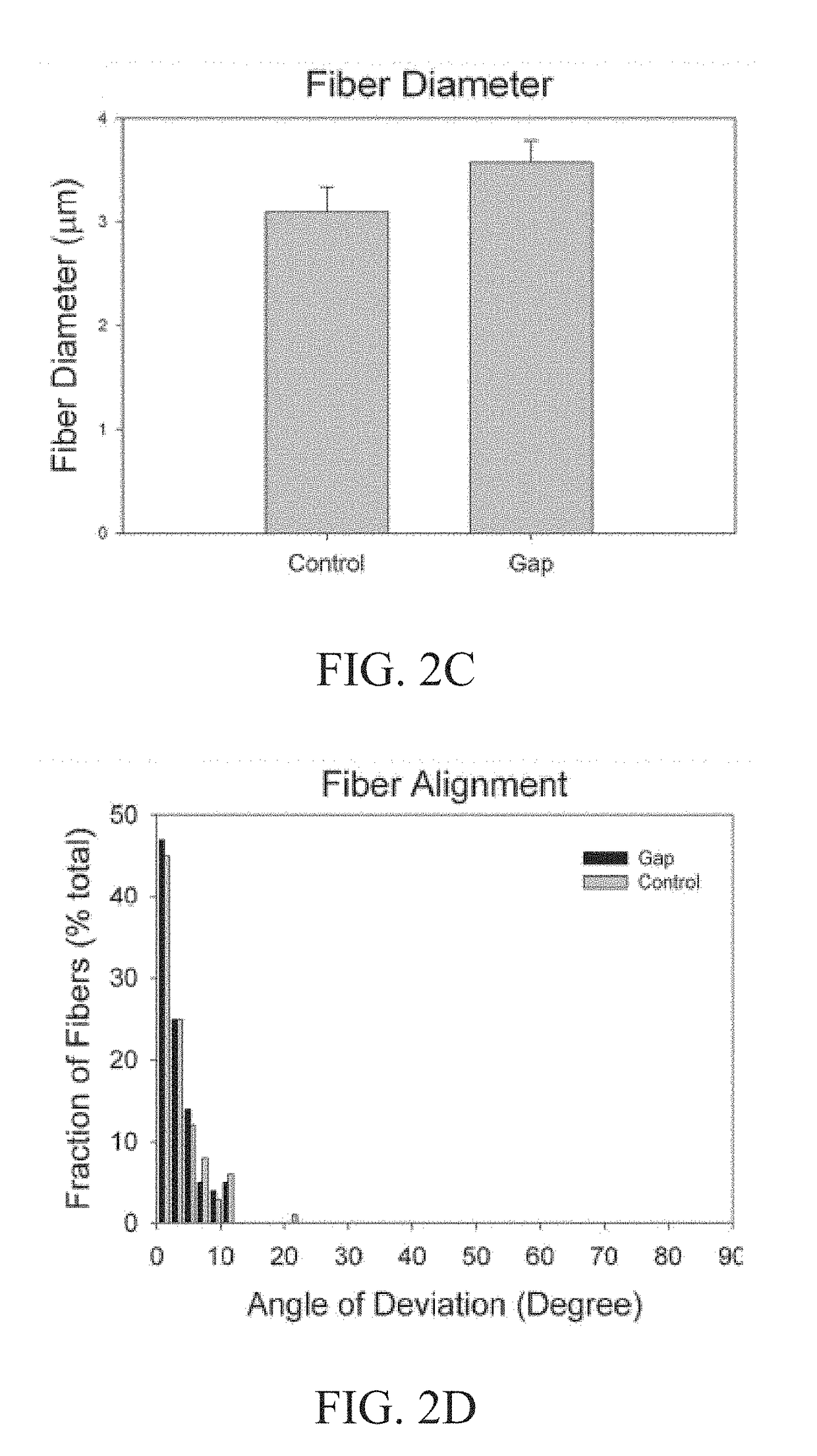In vitro culture model of anisotropic to isotropic transitions
a technology culture model, which is applied in the field of anisotropic to isotropic transition culture model, can solve the problem of no available biomaterial construct, and achieve the effect of great difficulty or expense in tim
- Summary
- Abstract
- Description
- Claims
- Application Information
AI Technical Summary
Benefits of technology
Problems solved by technology
Method used
Image
Examples
embodiment 1
[0043]A cell culture apparatus for modeling isotropic-to-anisotropic cellular transitions, comprising:[0044]a substrate comprising an isotropic film surface with one or more regions of aligned fibers dispersed thereon, wherein the one or more regions of aligned fibers and the isotropic film surface provide a topographic-to-non-topographic transitional boundary therebetween.
embodiment 2
[0045]The apparatus according to embodiment 1, wherein the fibers are electrospun fibers.
embodiment 3
[0046]The apparatus according to any of embodiments 1-2, wherein the fibers comprise poly-L-lactic acid.
PUM
| Property | Measurement | Unit |
|---|---|---|
| diameters | aaaaa | aaaaa |
| thickness | aaaaa | aaaaa |
| temperature | aaaaa | aaaaa |
Abstract
Description
Claims
Application Information
 Login to View More
Login to View More - R&D
- Intellectual Property
- Life Sciences
- Materials
- Tech Scout
- Unparalleled Data Quality
- Higher Quality Content
- 60% Fewer Hallucinations
Browse by: Latest US Patents, China's latest patents, Technical Efficacy Thesaurus, Application Domain, Technology Topic, Popular Technical Reports.
© 2025 PatSnap. All rights reserved.Legal|Privacy policy|Modern Slavery Act Transparency Statement|Sitemap|About US| Contact US: help@patsnap.com



